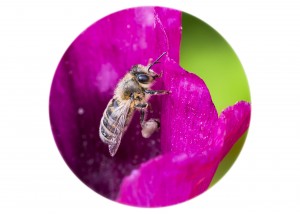Our Little Visitors
A selection of insects photographed in the garden in its first year.
By Vivian Russell
Bees
Female bees provision their young with nectar and pollen. They use ‘pollen baskets’ or stiff hairs to collect protein rich pollen, and sugary nectar with their tongues. Some have short tongues, others have long tongues and these prefer deep flowers such as beans, comfrey and nasturtiums. Males have no function other than mating. They don’t sting because they don’t defend the nest, and have no ‘pollen baskets’ because they don’t feed the young. Once they leave the nest they never return and you often see them roosting on plants overnight.
Bumblebees (Bombus)
There are 7 common species and we have all of them in the garden. Queens emerge from hibernation in early spring and start searching for somewhere to start a nest. Some nest under ground in abandoned mouse nests, others like long grass or dry warm cavities. Forage is critical for a new queen at this time as she battles the wind and cold. Once she has reared her first batch of daughter ‘workers’, she will stay safely in the nest and lay more eggs. A colony cycle lasts about six weeks or so, with males and new queens emerging at the end. The males and workers will all die by November, and the new queens go into hibernation for the winter.
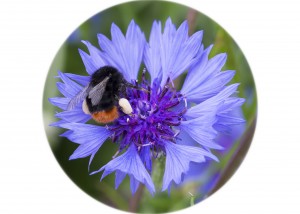
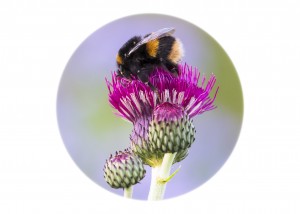
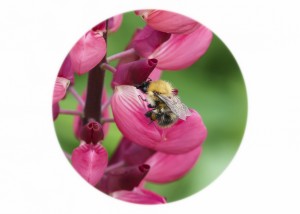
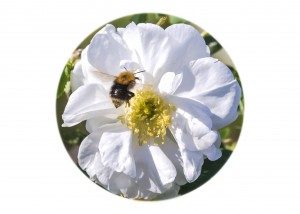
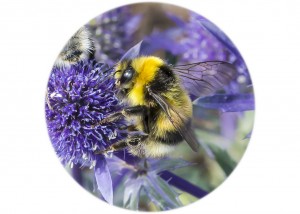
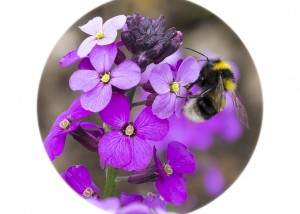
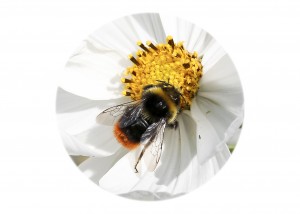
Honeybee
There is only one species of honeybee, Apis mellifera. The majority live in hives and are looked after by beekeepers.They have a 2 km forage range and are often in the garden.
Honeybee (Apis mellifera)
Solitary bees
These small bees don’t live in hives or colonies. Instead, each female makes her own nest, collecting pollen by means of stiff bristly hairs on her legs or under her tummy (scopa). The south facing side of the Bee & Bug Home provides nesting holes for them.
The spring flying Red Mason Bee (Osmia bicornis) constructs her nest as a series of individual compartments, each one provisioned with a ball of pollen and nectar, onto which she lays an egg. She uses mud to separate the cells and seal the tube at the end. Leafcutter bees (Megachile species) emerge in summer. They use leaves or petals to make and seal their nests, and they resemble miniature cigars. Their young remain in their cells until they emerge as adult bees the following year.
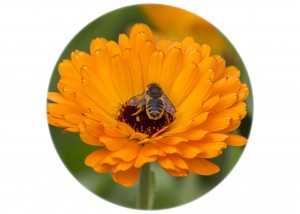
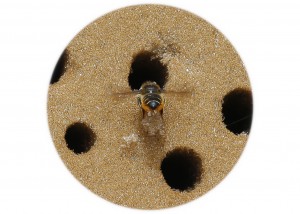
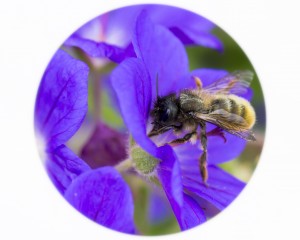
Solitary bees that nest underground are called Mining Bees. The Wool Carder Bee is a character, chasing other bees away from his patch allowing his ‘wives’ exclusive access.
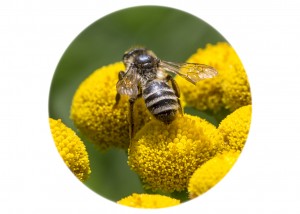
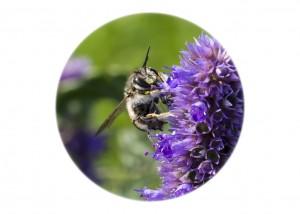
tba…..
Mining bee (Halictus)
Butterflies and Moths
Butterflies and moths feed solely on nectar using their long tongue (proboscis) to sip nectar from a variety of flowers. They lay their eggs on or near the leaves of specific plants which the caterpillars (larvae) will then eat. These are known as larval food plants and we have some of these planted in the garden. Painted Ladies, Red Admirals and our two day-flying moths are summer migrants and can’t overwinter in the cold north. But Small Tortoiseshells, Peacocks, and the Small White butterflies do, and hopefully they will use our Bee & Bug Home.
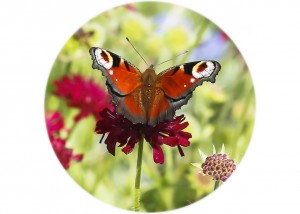
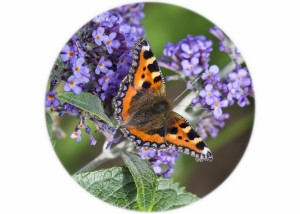
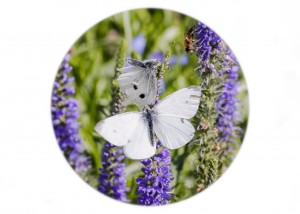
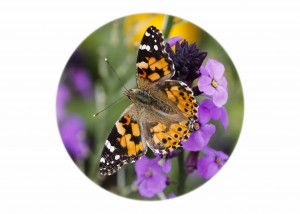
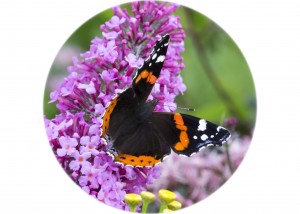
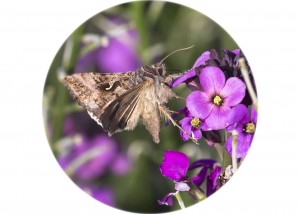
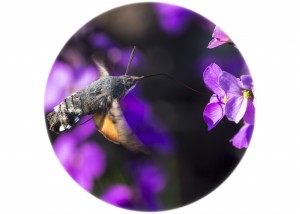
Caterpillars: These are the stage of butterflies and moths, after they hatch from an egg. They are usually responsible for the larger holes you see in leaves, fattening up before spin their cocoons on the underside of leaves or in the soil. They make tasty meals for birds and their chicks, who keep the population in check.
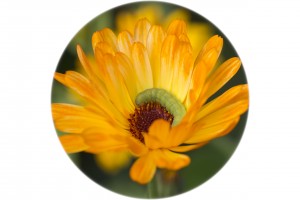
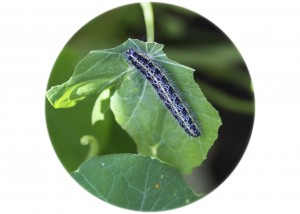
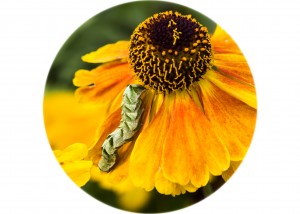
tba….
Blackbird
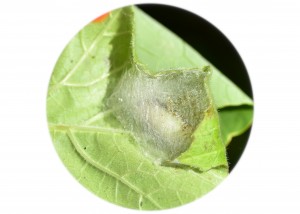
Moth larva inside webbing
Ladybirds – We have two species of ladybird in the garden so far – the 14 spot ladybird, and the 7 spot which is a coastal species. Ladybirds and their larvae are voracious aphid eaters.
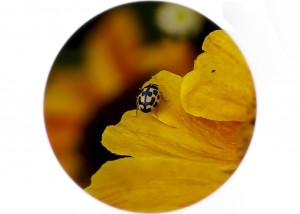
Here is the life cycle of the 7 spot Ladybird, photographed in garden. After mating, the ladybird lays tiny eggs on the underside of leaves. These become larvae and then pupae before emerging as adults.
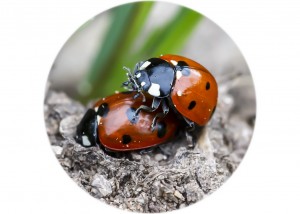
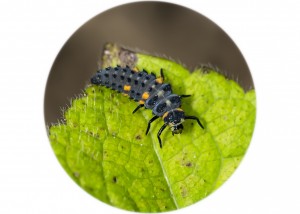
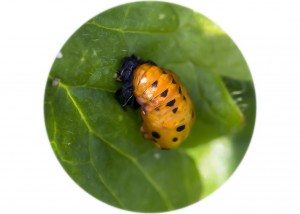
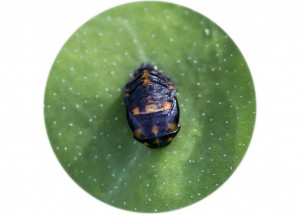
Wasps
Social wasps and the tiny Solitary wasps are very useful in the garden because they collect ‘pests’ such as aphids and caterpillars to feed their young. Social wasps will nest elsewhere, but some species of solitary wasps will nest in our Bee & Bug Home. Some make their own nest while others are ‘cuckoos’, laying their eggs in the nests that other bees and wasps have made in the Bee Home.
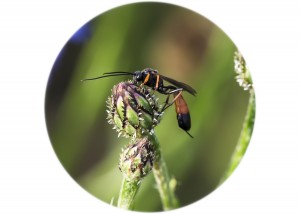
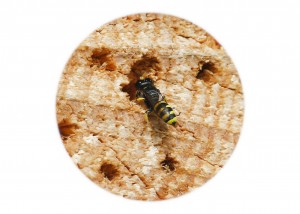
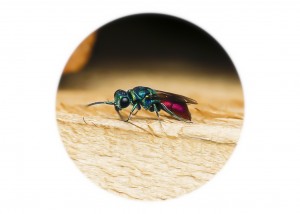
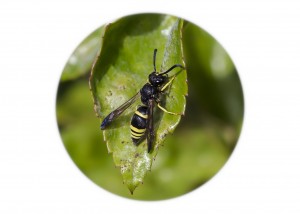
Social Wasp
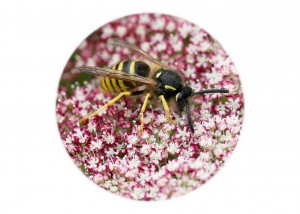
Hoverflies
These are often confused with bees or wasps because they are brilliant mimics. Look for their huge eyes and short, stumpy, antennae. Like ladybirds, they start off as eggs and develop into aphid eating larvae and then pupae.
Helophilus pendulus
Eristalis intricaria
Scaeva pyrastri

